New stadiums: Thai football (Part 1. Bangkok)
source: StadiumDB.com; author: michał
 Don’t expect scenes from “Hangover 2”, the football side of Bangkok is not as interesting as the city’s nightlife. That said, it’s still worth looking how Thai football is developing.
Don’t expect scenes from “Hangover 2”, the football side of Bangkok is not as interesting as the city’s nightlife. That said, it’s still worth looking how Thai football is developing.
Advertisement
Did you know it’s already year 2558 in Thailand? We had no idea as we don’t follow the Buddhist calendar. But whichever method you use to count, the Thai Premier League is 18 years old this year. Which is enough to be considered adult in many countries. We decided to give Thailand some attention, as we barely had the country mentioned before. For starters, here are 4 stadiums located in the nearly-8-million metropolis:
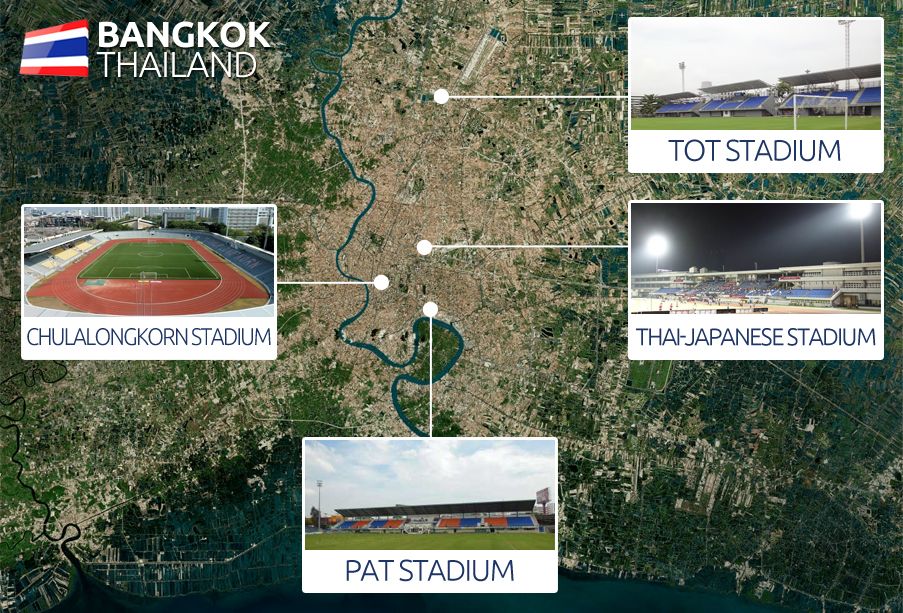
Chulalongkorn Stadium (20,000)
Central stadium of the Chulalongkorn University is known for being the first one in Thailand to have artificial turf installed. But before that happened in 2005, it had already served for over half a century for football and numerous other events.
Possibly the most famous sports battle to take place here is the 1953 boxing match between Jimmy Carruthers and Chamroen Songkitrat. There were reportedly 70,000 people watching both boxers and that seems particularly impressive compared to current normalized capacity of 20,000.
Current use is mostly provided by professional football teams, which regularly use it for games. Anchor tenant role is played by Chamchuri United.
PAT Stadium (12,308)
Built in 1967 as Tha Ruea Stadium, this football venue at first had just one grandstand. This section along the southern side of the field to date remains the only one built with reinforced concrete and offering shelter to the fans.
In 2009 and 2011 the stadium was gradually expanded to its current capacity by adding tubular stands in the north and east and also greater steel-prefab stands in the west and upper north section. Interestingly, there is an internal road running directly under the upper north side.
The stadium is owned, operated and used as football home by Port FC, thus the full name Port Authority Thailand Stadium. It’s rarely used to at least half the actual capacity, topping in 2011 at 6,916 people.
Thai-Japanese Stadium (6,600)
Main stadium of the Bangkok Youth Centre bears the name honouring Thai-Japanese friendship. Rightly so, because it was the cooperation of both countries that made it exist today. In 1980 Thailand and Japan signed an agreement that saw both of them participate financially in this extensive project.
Altogether, over a period of two years infrastructure enabling training in 22 sports disciplines was created by Japanese Obayashi Corporation. The Japanese financial contribution stood at some ¥1 billion, over 50% of the total cost.
The stadium houses Bangkok United of the Thai Premier League. It used to hold over 10,000 people, but was downsized after conversion to an all-seater in 1999. This is when it held the closing ceremony of 1999 ASEAN University Games.
TOT Stadium (5,439)
One of Bangkok’s northernmost stadiums is also one of the smallest in domestic Premier League. It was built near the Don Mueang International Airport in 2010 and consists of five independent grandstands. Three of them stand along the west side of the field and offer cover, while two remaining ones span along the south and east. North end is left open.
Advertisement
 StadiumDB
StadiumDB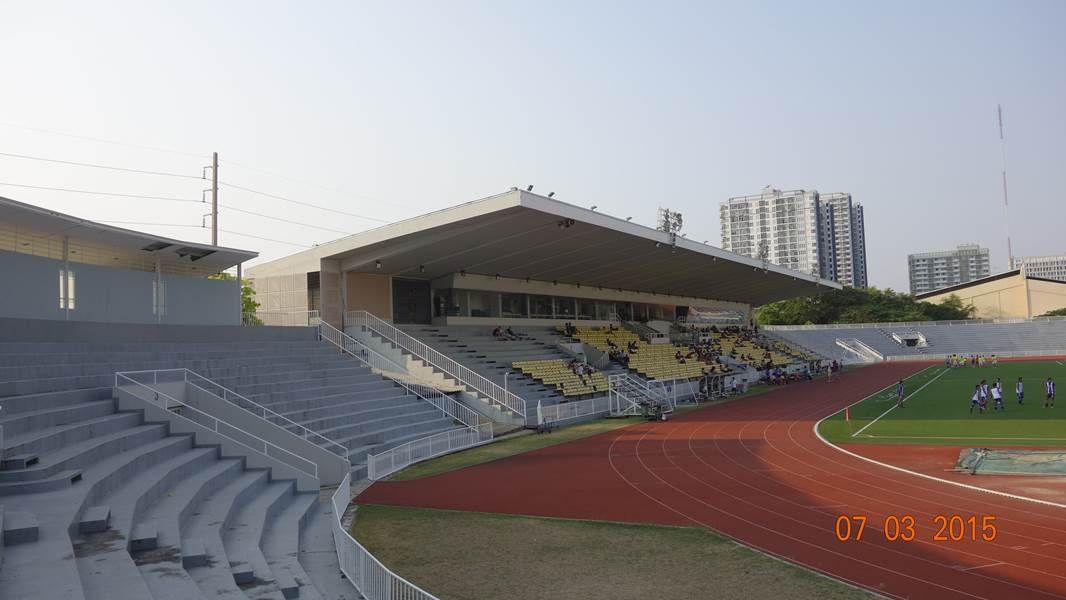 ©
© 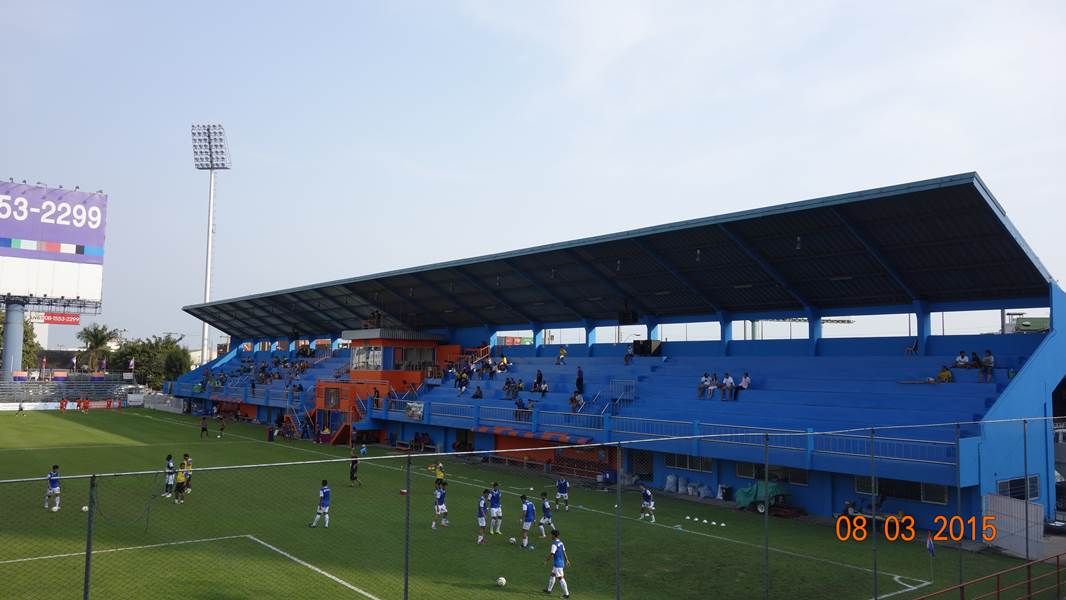 ©
© 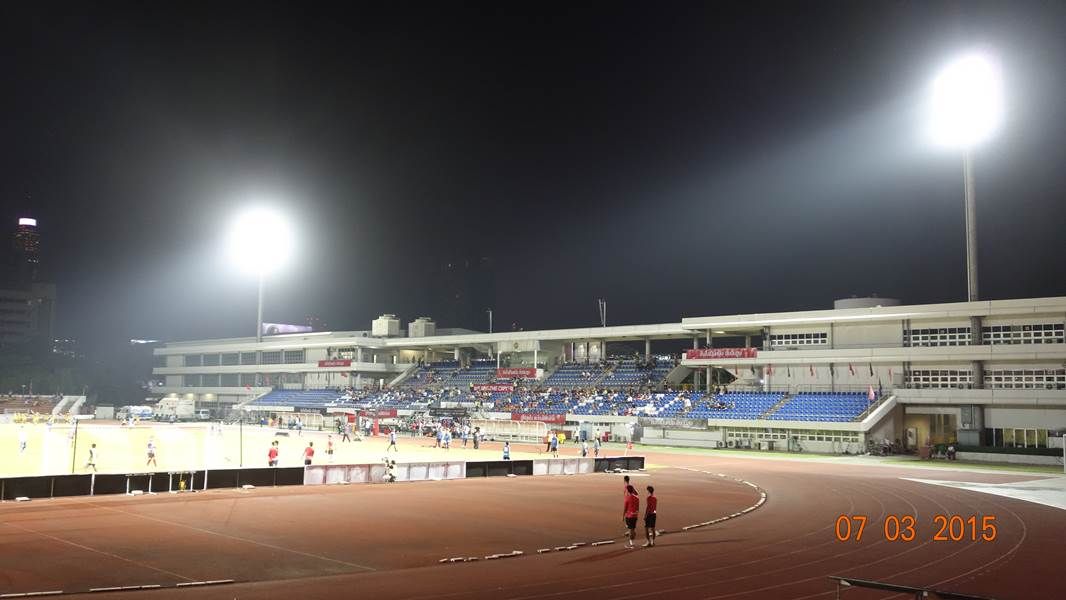 ©
© 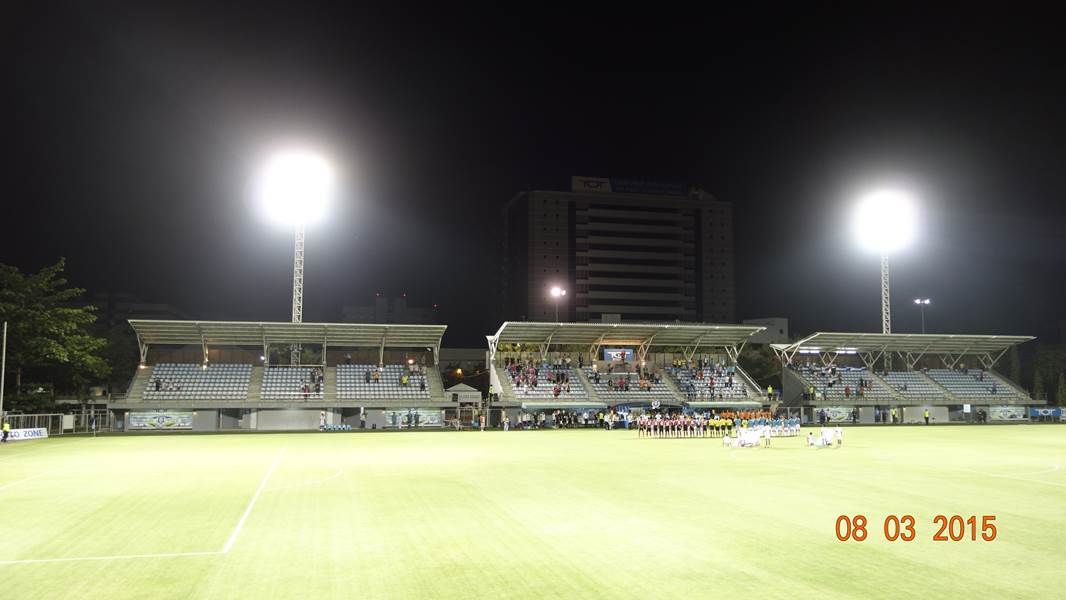 ©
©